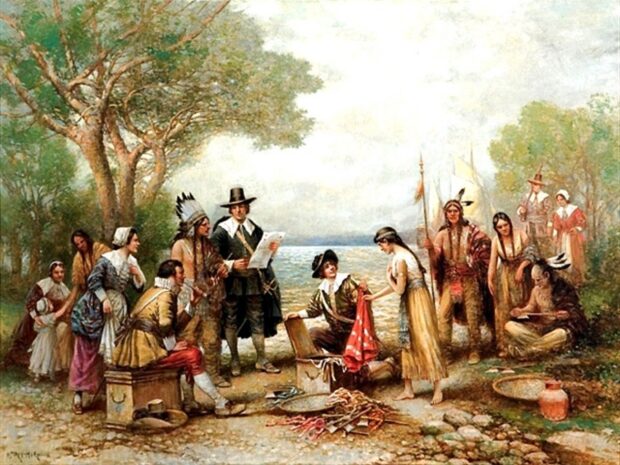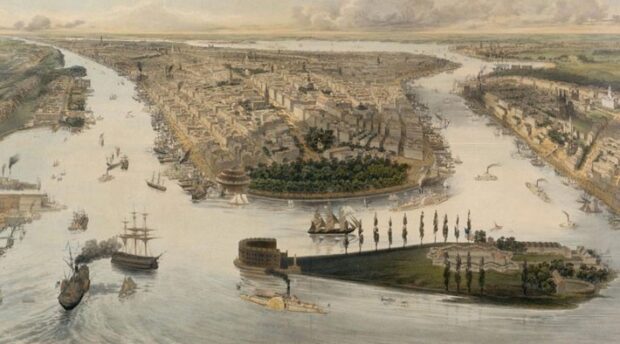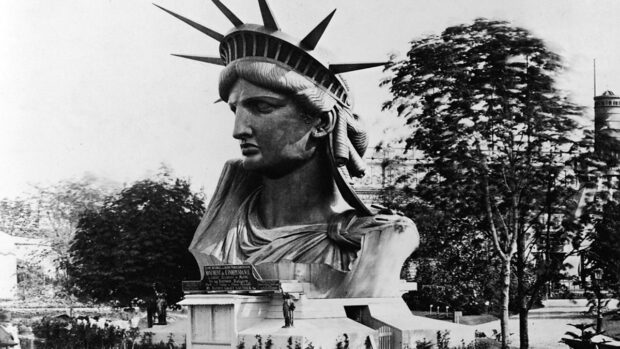One day in 1524, the Florentine Giovanni Verrazano, who had been equipped by France to explore the northeast coast, docked at New York Harbour. He was the first European to open the area (much later the bridge connecting Brooklyn to Staten Island would be named in his honor).
Further up to 1609 no one was interested in these places until Henry Hudson (in the Russian tradition of Hudson), a Scottish captain in Dutch service seeking a northwestern sea route, landed here and declared the land to be the property of the West CoastDutch India Trading Company. On his ship, he traveled up the Strait, which later received his name. In 1613, merchant Adrian Block began the first permanent settlements, founding several factories. He made the first topographic map of Manhattan.

The first group of settlers arrived here in 1624, these were the Walloons (Belgians), but the local Indians annoyed the fur traders a lot, even the protective wall that ran exactly where the world-famous Wall Street now passes did not help.
Therefore, already in 1624, the governor, Dutchman Peter Minuit, as legend says, purchased the island of Manhattan from a local Indian tribe for trinkets at the price of 60 guilders (about $ 24). Thus, a fort was built in the south of the island, which was named New Amsterdam. However, there were not enough people, and adventure seekers from the Old World came here – the audience was very motley, including adventurers of all stripes, bandits, and prostitutes.
Gov. Peter Stuyvesant, nicknamed One-Legged Peter, who was appointed here in 1647, brought order to the settlement by establishing a police force, post office, and school. One of the first institutions of the city was the prison he built. Curiously, Stuyvesant’s ban on the sale of alcohol on Sundays lasted until 2004. However, even now there are liquor stores that are closed on Sundays.
During the governor’s service of Peter Stuyvesant, the number of residents reached ten thousand people. Dutch rule ended in 1664 – the Duke of York, brother of the English king, sent the British Royal Navy to the New World. New Amsterdam surrendered without a fight and was renamed New York. Three years later, the British established their own administrative system here. In particular, a municipal service appeared, headed by Thomas Willett, who became the first mayor of the city. From that moment on, New York began to develop rapidly. In 1713, a ferry service to Staten Island opened.
In 1725, the city newspaper was founded by William Bradford. In 1732, the townspeople received their first theater. And in 1754, the first higher educational institution, King’s College, was opened. Having strengthened its power in Europe, England needed funds to maintain it, and the American colonies saw it as a suitable source. The latter, however, did not seek to comply. Of course, there was no such thing as an “American” at that time; the colonists represented a very diverse human mass. And yet, in connection with the tough actions of the British, anti-British sentiments began to intensify. And in 1765, the Colonial Congress held in New York declared its “no” to the British stamp duty and taxation, which robbed almost any colonist.
This marked the beginning of the War of Independence, the city turned into a theater of military operations. At the end of June 1776, General George Washington arrived in New York. The crowd gathered on Broadway greeted him with enthusiasm. One of the hardest battles of this war was the Battle of Brooklyn, which George Washington lost to British General William Howe. As a result, the British captured the Brooklyn Heights, then the Harlem and Morningside Heights, and then the entire island.
Thus, until the end of the Revolutionary War (1783), New York remained in British hands. In the fall of 1781, after several serious defeats, the British army surrendered, and in early September 1783, the Treaty of Paris was signed, according to which England recognized the independence of thirteen American colonies. And in 1784 New York became the main city of the young state. In 1789, the US Constitution was ratified. During this period, New York is developing rapidly. New enterprises appear, trade revives, the population grows, by 1790 its number reached 33 thousand people. In the same year, the capital moved to Philadelphia.
However, this did not prevent New York from prospering. Swamps were drained and new streets were laid, more than two dozen newspapers were published in the city at that time. The Stock Exchange was founded in 1792. In 1807, the famous inventor Robert Fulton tested his steamer on the Hudson. The population of New York increased rapidly and a construction boom began. It was at that time that the then Mayor DeWitt Clinton developed the “system of squares”, according to which the island of Manhattan was divided into 155 streets and 12 avenues. However, the peaceful course of life was again disrupted. In 1812, a new war broke out with England.

After the end of the Napoleonic Wars, an avalanche of immigrants rushed to New York. Already in 1820, the population of the city exceeded 120 thousand people. In 1827, slavery was abolished in New York, which increased the number of hired workers and positively affected the economic development of the city. In 1835, New York became the largest city in the country, overtaking Philadelphia. However, in the same year, a monstrous fire destroyed much of Lower Manhattan.
There was an urgent need to build up the city. So, in 1842, on the site of today’s Bryant Park, the Croton Reservoir was erected – the main source of drinking water for New Yorkers, and in 1857 the construction of Central Park, the first man-made park in the country, began, and the construction of residential buildings was actively underway. Once again, the course of this peaceful, constructive life was put on hold.
In 1861, the North-South Civil War broke out, the bloodiest event in American history. 80,000 New Yorkers fought in the ranks of the northerners, supporting President Lincoln. In 1863, a southern army led by General Lee was defeated at the Battle of Gettysburg. This event became a turning point in the course of the war. And in 1865, the capital of the southern states, Richmond, fell, which marked the end of the Civil War.
Meanwhile, after the war, the influx of immigrants increased, and New York became the first haven for millions of those who were looking for a better life for themselves. The city gradually began to come to its senses, life returned to normal. In 1868, the first railway overpass was built. The first apartment building was built in 1869. In 1872, the Metropolitan Museum opened its doors for the first time, and the next year – the Museum of Natural History. In the same period, K. Vanderbilt was building a station – the famous Grand Central (a new station building was built on the same site in 1913).
In 1877, the first telephone book was published, which listed 252 subscribers. And in 1882, the Thomas Edison power plant was launched, which made it possible to illuminate the south of Manhattan with three thousand electric lamps. The next year – 1883 – was marked by a grandiose event in the history of the city: the Brooklyn Bridge opened.

And in 1886, the French Republic gave New York a Beautiful Lady – a sculpture of a woman holding a burning torch, the New Yorkers called it the Statue of Liberty, and it became the main symbol of the city.
1898 was a special year for the city: Manhattan, Queens, Brooklyn, the Bronx, and Staten Island merged into Greater New York, which retains this administrative status to this day.
Like us on Facebook for more stories like this: